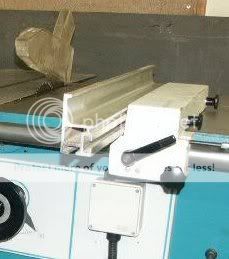OPJ
Established Member
I've always though the narrow bandsaw-thing had something to do with getting maximum width of cut without facing restrictions due to the depth (distance from blade to throat of bandsaw)? I could be wrong. But it is because of the throat that cross-cutting is done on the right - perhaps that's why they then put the fence on the left? I do find ripping easier on the bandsaw with the fence on the left though. But not with a circular saw.
There's a video on YouTube of a couple of American guys in a joinery shop trimming the width of an assembled staircase - and they certainly wouldn't be able to do that with the fence on the right!
I was told at college a couple of years ago that machines are designed for the average right-handed person and that, if you were left handed, you would have to get used to using your right. Look at radial arm saws for another example. I only ever use tha left handed if my workpiece is to the right of the blade - very rarely.
There's a video on YouTube of a couple of American guys in a joinery shop trimming the width of an assembled staircase - and they certainly wouldn't be able to do that with the fence on the right!
I was told at college a couple of years ago that machines are designed for the average right-handed person and that, if you were left handed, you would have to get used to using your right. Look at radial arm saws for another example. I only ever use tha left handed if my workpiece is to the right of the blade - very rarely.


































